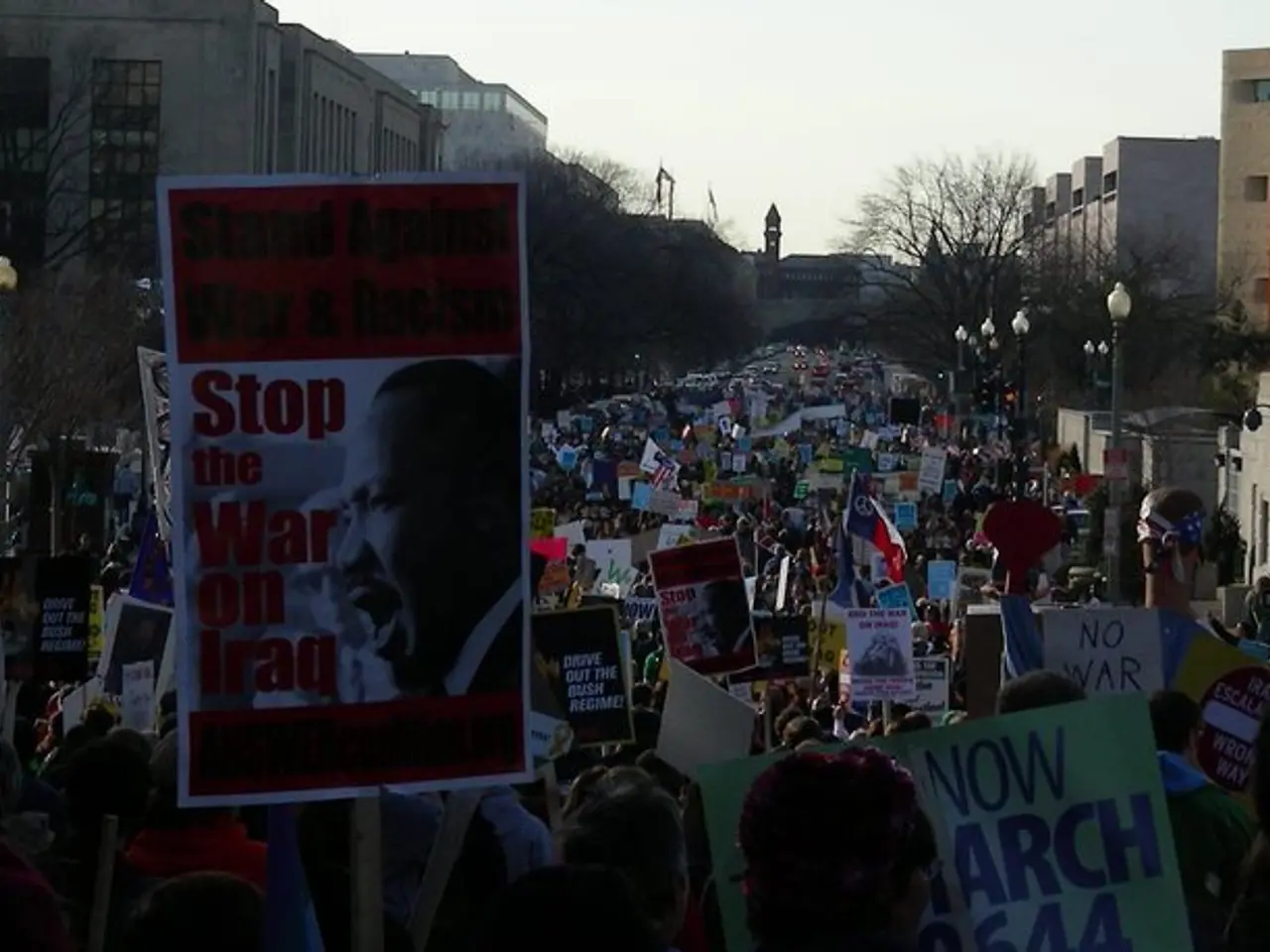Intensified Aggression Surges in Serbia
In the heart of Europe, the streets of Serbia have once again been filled with unrest, as protests against President Aleksandar Vučić's government continue for the second consecutive night.
The protests, which began in November 2024, were ignited by a deadly incident in Novi Sad, where a train station canopy collapsed, claiming the lives of 16 people. The tragedy sparked accusations of corruption in state infrastructure projects, leading to broader anti-government demonstrations targeting Vučić's administration and calling for political changes.
The key timeline and developments since then have been marked by intense clashes, with protesters demanding early parliamentary elections and the resignation of Interior Minister Ivica Dačić, amid allegations of police violence and government repression.
On August 13 and 18, confrontations between anti-government protesters and Vučić supporters escalated in multiple cities, including Belgrade, Novi Sad, Kraljevo, Kragujevac, Čačak, and Niš. Riot police deployed tear gas and reinforcements, while violent incidents involved flares thrown and property damage, such as smashed office windows of the ruling Serbian Progressive Party.
Government forces have been accused of using hired muscle and plainclothes police to intimidate and suppress protesters. Despite the unrest, Vučić has refused to call early elections and continues to maintain strong ties with Russia and China, even as Serbia seeks European Union membership.
The ongoing developments include continued clashes between protesters and police, counterdemonstrations by Vučić supporters, and heightened tensions nationwide. The protesters criticize the Vučić government as corrupt and authoritarian, while Vučić has expressed a desire to "clean" the streets of protesters.
The latest protests were fueled by SNS supporters attacking government-critical protesters in Vrbas and Bačka Palanka without police intervention. In Belgrade, SNS supporters threw fireworks at government opponents, while in Novi Sad, protesters smashed the windows of two offices of the ruling Serbian Progressive Party, entered the buildings, and removed items.
The atmosphere in Belgrade was chaotic, according to media reports, with clashes occurring between protesters from different sides and from police violence with batons, resulting in injuries. More than 30 cities across Serbia saw government opponents demonstrating in front of SNS party offices.
Independent experts and opposition figures blame shoddy workmanship and corruption under the Vučić government for the train station collapse that triggered the protests. As the protests continue, it remains to be seen how the situation will unfold in the days ahead.
War-and-conflicts continued to brew in Serbia as protests against President Aleksandar Vučić's government, ignited by the Novi Sad train station collapse, entered their second consecutive night. The unrest, rooted in politics and general news, has led to intensified clashes between protesters and police, with accusations of police violence and government repression escalating the tensions.







